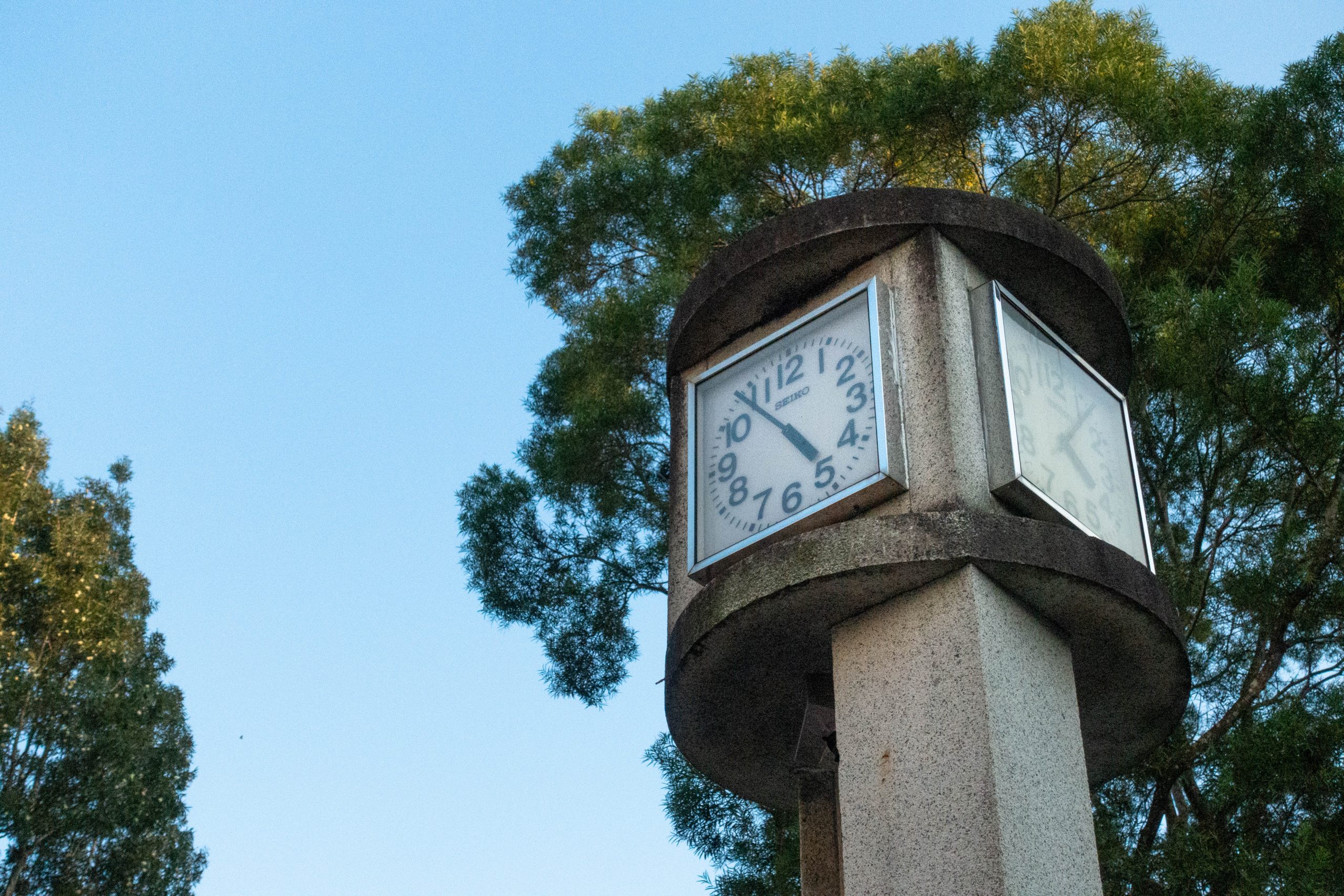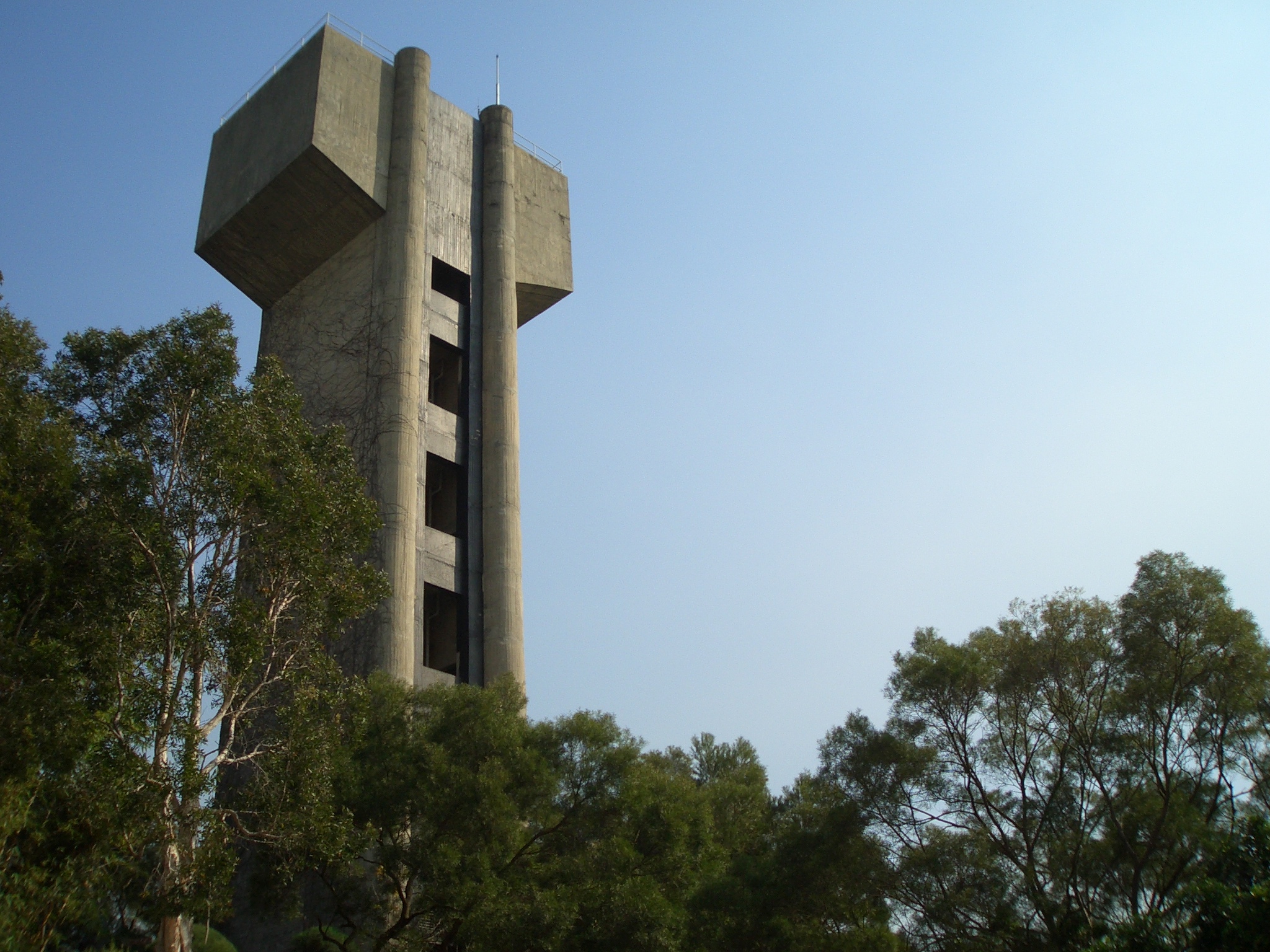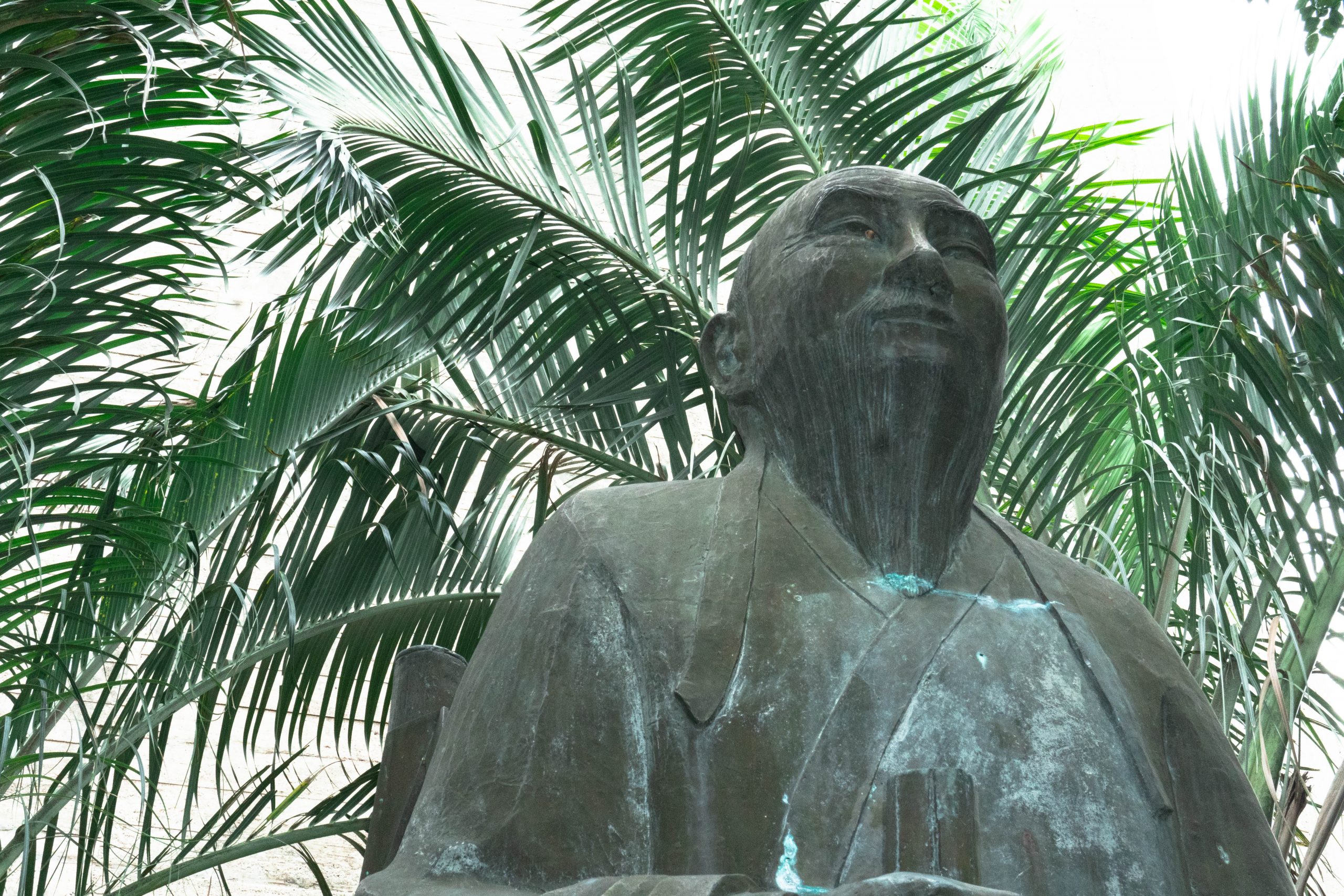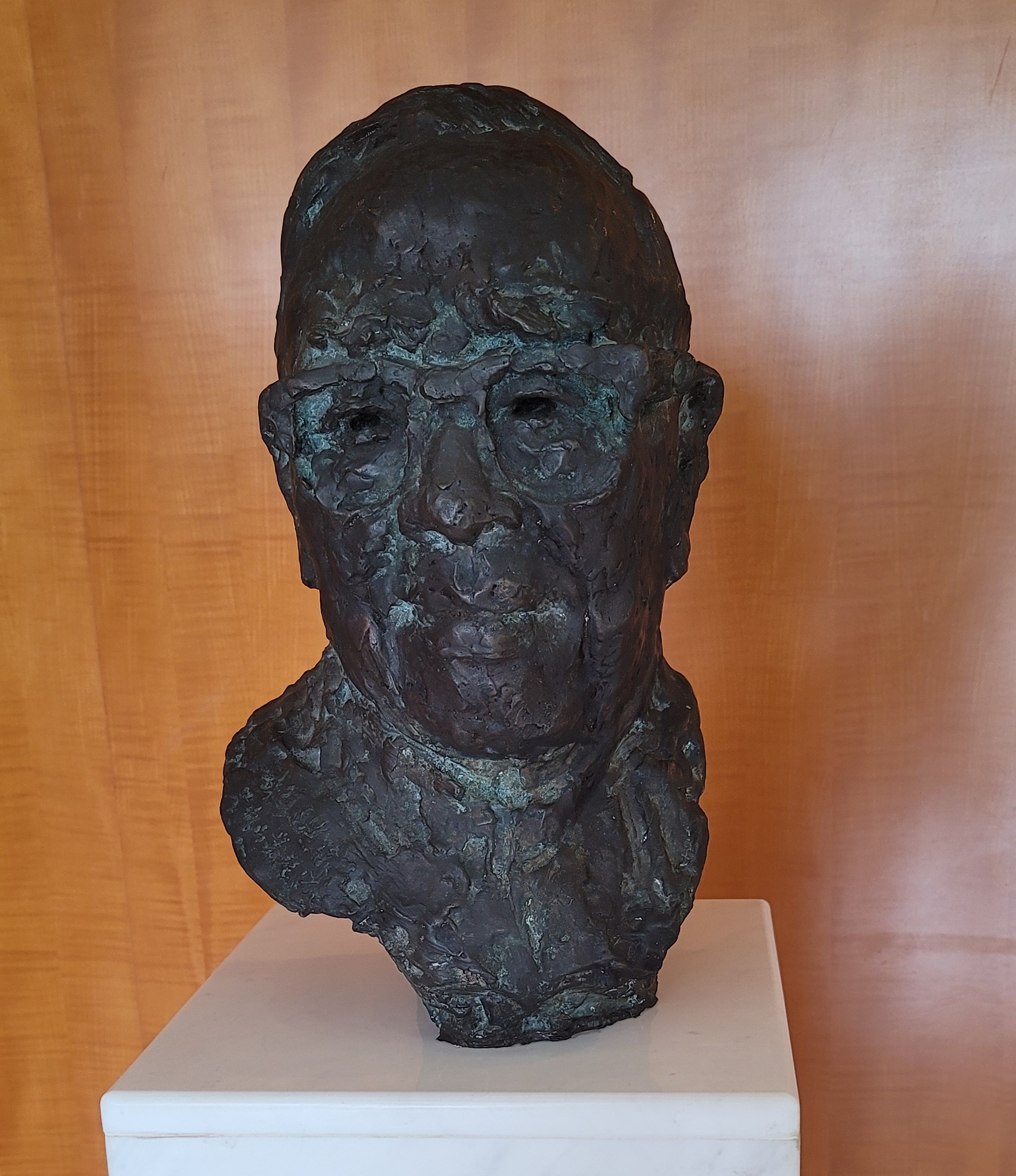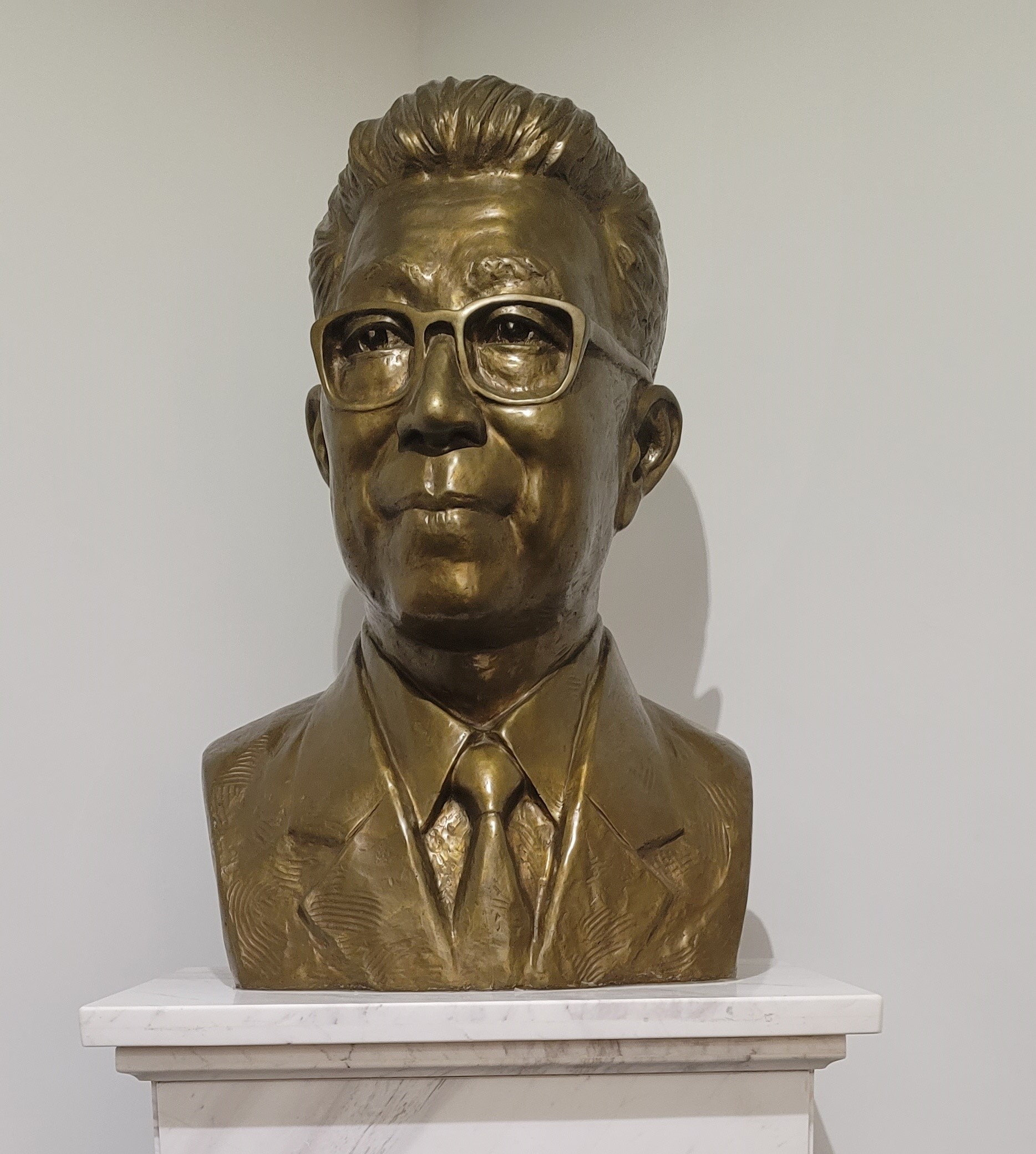The Pavilion was built to develop the idea of the “union of man and nature”, which is from “The Theory of the Union of Man and Nature” composed by Dr. Ch’ien Mu. The roof of the pavilion is transparent with bamboos planted by its sides and stone chair in the Pavilion. Visitors can see the Tolo Harbour from the Pavilion and the pond in front shows the reflection of the sky and sea in the same colour. While sitting there, one may feel like being an integral part of the nature. “The Theory of the Union of Man and Nature” by Dr. Ch’ien was also inscribed on the wall.
The New Asia Clock Tower was designed with the concept of “the sky is round and the earth is square” in mind to express the idea of the integration of man and nature. The base of the clock is square and the top is round, appearing so that they are integrated. The clock is supported by two triangle pillars, which are divided by a square, expressing the lyrics of the New Asia College Anthem: “Thousand catties upon the shoulders.” The clock tower, a champion work in an open competition, was designed by a student from the Architecture Department.
The New Asia Water Tower, also called the “Gentleman Tower”, is an important landmark of the College. The simple outline of the T-shape tower is congruous with its functional design. The horizontal structure at the top comprises straight lines and rigid angles, which differ from the curvilinear design of the United College Water Tower (also known as the “Lady Tower”). The 120-feet tower is located next to the New Asia Amphitheatre. The tower can be seen from Tai Po Road and the Tolo Harbour Highway. The tower has tanks storing potable water and flushing water respectively to serve various units and departments of the College.
In order to encourage students to pursue understanding of Chinese culture, The Statue of Confucius was carved by a prominent sculptor, Mr. Van Lau. It faces north toward the hometown of Confucius in Shantung province. At the back of The Statue is a bamboo stick engraved with Confucius’ teaching motto, “ever learning, and never tired of teaching.”
First founded on Farm Road, Kowloon in 1954, the Ch’ien Mu Library was then established in CUHK in 1973 and named after Dr. Ch’ien Mu, the founder of the New Asia College. Modeled after the library of Berea College, Kentucky, U.S.A., the building was built with an elevated mezzanine. It houses collections on Chinese Language and Literature, Japanese Language, and Literature and Fine Arts.
Mr. Tang Chun-I, one of the College founders, established the Department of Philosophy. His statue on the College campus was designed by sculptor Mr. Zhu Dacheng. The statue’s inscription was written by Professor Yu Ying-shih, one of the first graduates and a former President of the College, with calligraphy by Professor Lee Yun-woon, former head of the Department of Fine Arts, CUHK.

